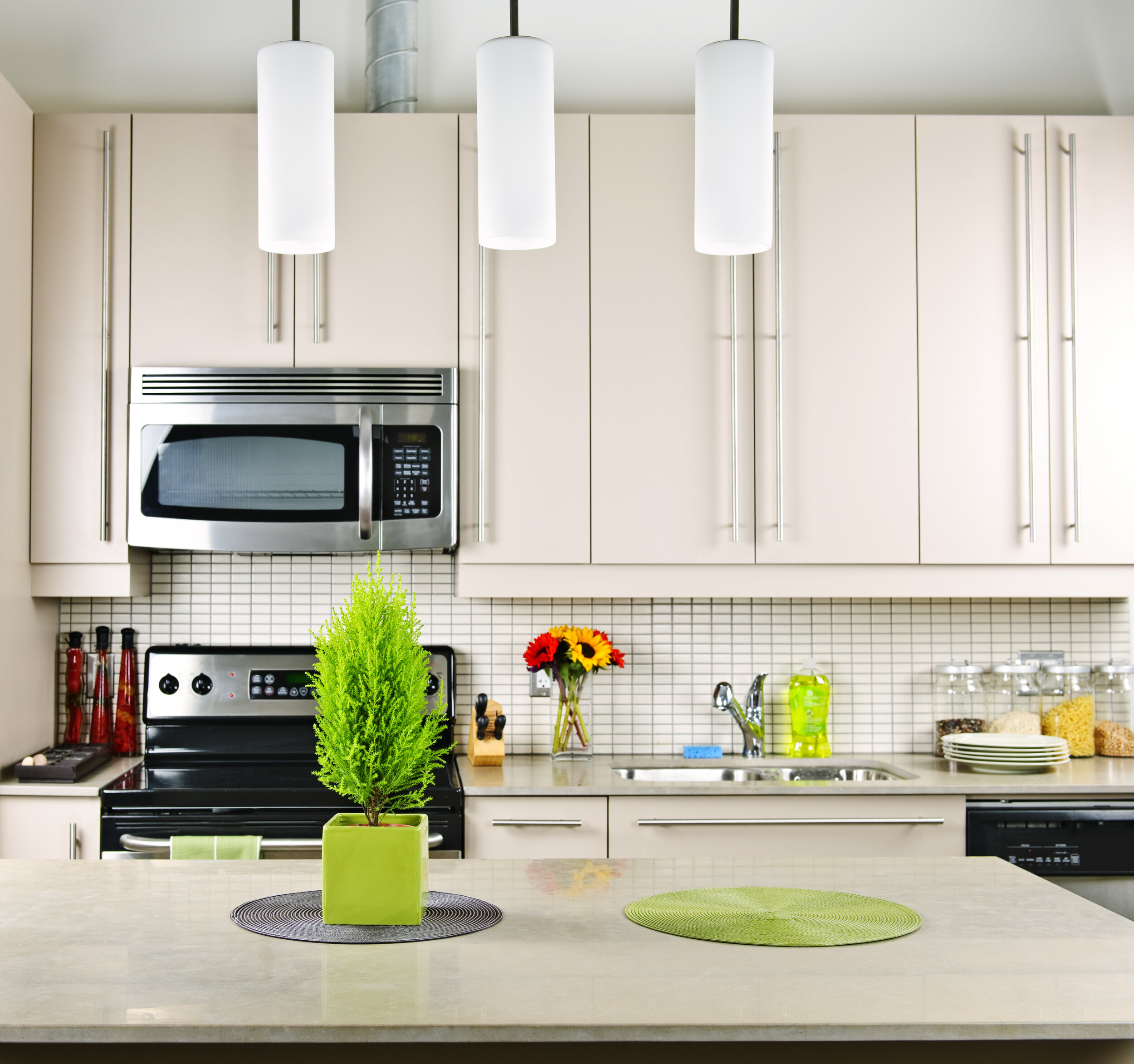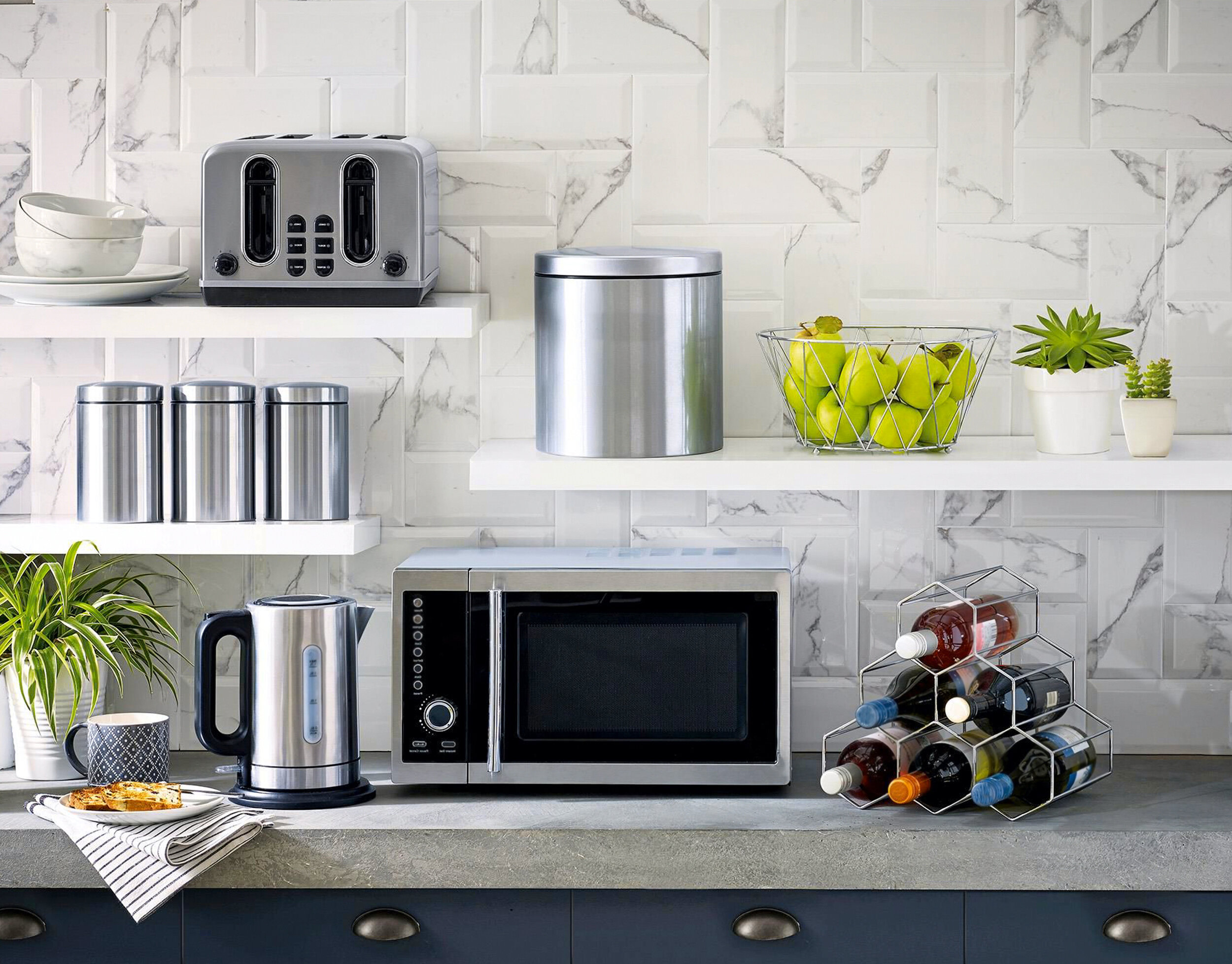As you’re planning out your new kitchen, you might be wondering if microwaves are out of style. You may ask yourself, should I get a microwave for my new home? The answer—you probably should.
Ever since microwave ovens were invented in the late 1940s, they’ve stood the test of time. Microwaves continue to be a staple in U.S. households and an essential kitchen appliance in our modern and fast lifestyle. It’s a quick way to re-heat leftovers, melt butter or chocolate, steam veggies, and even cook full meals. These days, go online and you’ll find tons of interesting recipes that can only be made in the microwave.
Still, even though most of us can’t imagine our kitchen without a microwave, it’s an awkward appliance. Designers continue to struggle to find a good spot for a microwave in the modern kitchen regardless of the model. Some spots are just hard to reach, make microwaves difficult to clean, and can feel unsafe for some homeowners.
Currently, there are four types of microwave ovens on the market: over-the-range, countertop, built-in, and drawer. Some of these models also come in a convection option. Unlike a standard microwave, which uses radio frequency to cook food, a convection microwave oven cooks with heating rods and a fan that circulates air in the oven, keeping food moister and more flavorful.
All microwave oven models have their advantages and disadvantages. Your kitchen floor plan, design style, your preferences and requirements will dictate the right microwave type for your new home.
Over-the-range microwaves. These types of microwave ovens install above a range or a cooktop in place of a range hood.
Pros
· Great for small kitchens, saves space
· Functions as a vent, two appliances in one
· Built-in lights brighten the surface of the range or cooktop
· A convection oven option is available
Cons
· Too high for some people to lift heavy dishes inside, including kids
· Provides poor ventilation (usually 300 cfm capacity, like a basic vent hood)
· Accumulates built-up grease from the range burners below
Countertop microwaves. These standard freestanding microwaves are designed to be placed directly on your kitchen counter.
Pros
· Easy to move
· Inexpensive
· No installation needed
· Easy to see inside and reach to clean
· Convection cooking option is available
Cons
· Takes up valuable countertop space (about 4 square feet of counter)
· Take away from a kitchen design, does not look sleek or appealing
Built-in ovens. This type of microwave is installed into a cabinet or a wall.
Pros
· Frees up counter space
· An integrated design that looks sleek, luxurious
· Custom height; the appliance can be installed at your eye level
· Convection cooking option is available
Cons
· Professional installation is recommended, which drives up cost
· Difficult to replace
· Takes up valuable cabinet storage space
Drawer Microwave. A microwave drawer is designed to fit perfectly into a lower cabinet or inside a kitchen island.
Pros
· Gives you additional countertop space
· Provides a modern look
· Has a spacious interior
· Easier reach for people who are shorter, including kids
Cons
· Convection cooking option is currently not available
· Professional installation is recommended, which drives up cost
· Hard to reach for cleaning the interior back wall
· Takes up valuable cabinet storage space
· Requires bending down to see the controls
· Difficult to replace
When you’re shopping around for a microwave oven for your new kitchen, there’s no wrong choice. Microwave drawers are a very versatile option for modern cooking needs. Along with built-ins, microwave drawers are also probably the best option if you want a sleek and streamlined look in your new space.
But if you’re on a tight budget, or you have a small kitchen with limited cabinet storage space, it could make more sense to install an over-the-range microwave or go with a countertop one. Whatever you choose, to extend your microwave’s life and avoid unnecessary repair expenses, be diligent about covering your food while heating it up, and always keep your unit clean.







